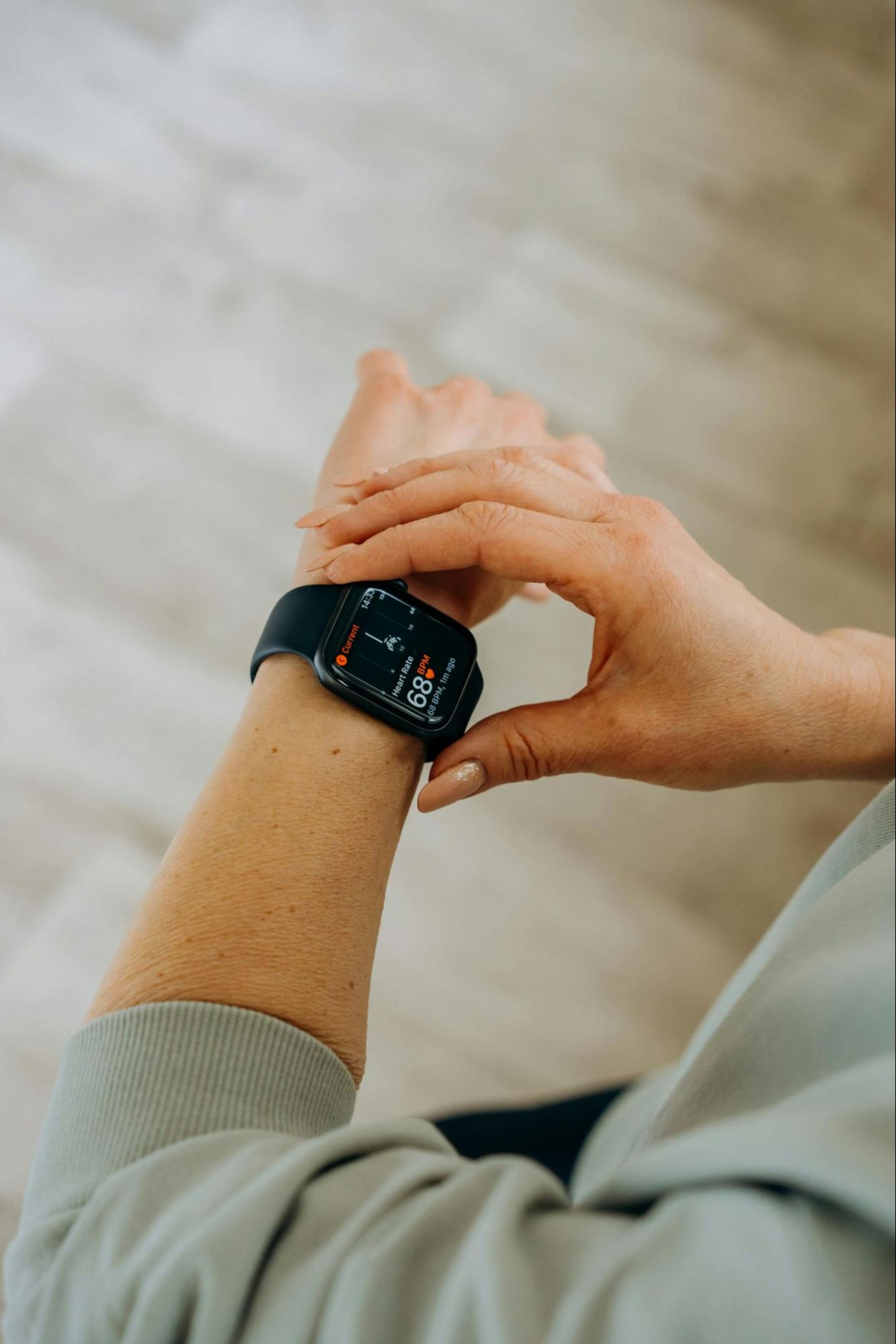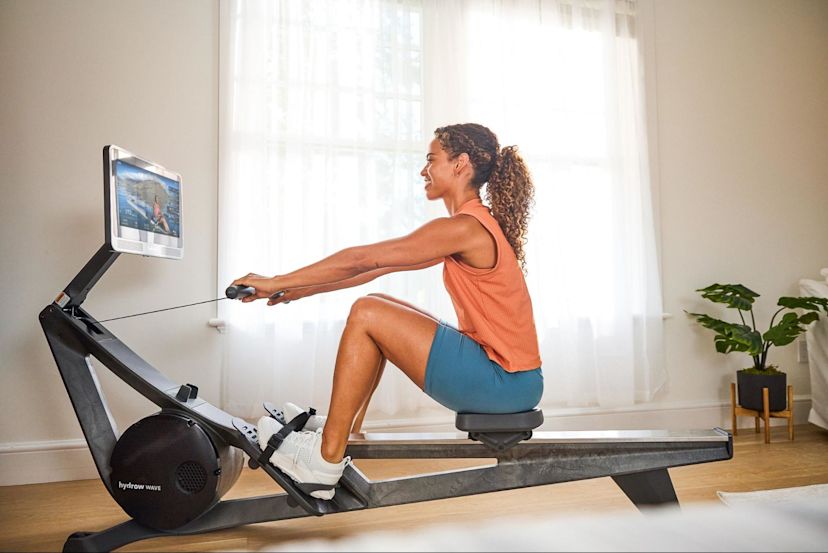How to Lower Your Resting Heart Rate

Lowering your resting heart rate is a key indicator of cardiovascular health and overall fitness. Whether you’re an athlete looking to optimize your performance or someone trying to improve your overall well-being, understanding how to lower your resting heart rate can have significant benefits.
In this blog, we’ll dive into:
Let’s get started!
Why is your resting heart rate important?
Your resting heart rate is a good indication of your cardiovascular health. Lower resting heart rates typically indicate healthier hearts, more efficient respiratory systems, and lower cholesterol.
Think of it like this: Your heart is a pump that sends blood through your circulatory system, including your lungs, where they oxygenate your blood. If any one of those components — the heart, lungs, or circulatory systems — isn’t working optimally, your heart will have to work harder and beat faster to provide your body with the same amount of oxygen it needs to operate properly.
The good news is that your resting heart rate is easy to measure and track, and there are ways to improve it.
How to measure your resting heart rate
The first thing to note is that resting heart rate is an individual metric, not absolute, so it’s important to measure your own resting heart rate and compare any changes to that, rather than comparing it to others’.
Many fitness trackers and wearable devices are able to measure your average resting heart rate and how it changes over time, but you can also track this metric manually. Resting heart rate is taken in the morning when you first wake and get out of bed. All you need is a timing device at your bedside and some way to record the number of beats per minute, such as a cell phone or note pad.
To measure your resting heart rate:
Set your timer for one minute.
Locate your pulse on your carotid pulse on your neck or your radial pulse on your wrist.
Count how many beats occur in one minute.
Record this number with the date in your notes.
It is worth keeping in mind that your resting heart rate can change due to many factors, including dehydration, sleep quality, illness, and fatigue, so you will need multiple measures over time to get an accurate picture of your typical resting heart rate.
5 ways to lower your resting heart rate
Once you know your resting heart rate, what can you do to maintain or lower it? Here are five ways to lower your resting heart rate, including:
Exercising regularly
Eating a healthy diet
Cutting out smoking or vaping
Reducing stress
Avoiding illness
Let’s dive into each of these strategies below:
1. Exercising regularly
Because your resting heart rate is a good indicator of your cardiovascular health, it makes sense that the best way to reduce your resting heart rate is to improve your cardio fitness through exercise.
When you exercise and increase your heart rate, you are training your heart to become a more efficient and stronger pump, so it can beat at a lower rate to maintain your body’s functions when you are at rest.

Cardio and Strength, Combined
Burn calories and build muscle with a Hydrow rowing machine.
Workouts that increase your heart rate for longer periods of time, like running, rowing, cycling, or hiking, will benefit your overall health and reduce your resting heart rate.
2. Eating a healthy diet
Combining your exercise routine with a healthy diet can help maintain or achieve a healthy body weight. When your body is at a healthy weight, there is less stress on your heart. This means it will beat at lower heart rates for the same amount of activity, including lower rates when you are resting.
For your diet, focus on avoiding sugary foods, excessive salt, and foods with saturated or trans fat. Instead, try to incorporate the following natural foods into your diet:
Fruits
Whole grains
Fat-free or low-fat dairy products
Lean meats
Poultry
Fish
Beans
Eggs
Nuts
Related blog: Is Diet More Important Than Exercise?
3. Cutting out smoking or vaping
Quitting smoking or vaping can lead to a lower resting heart rate. These activities cause your lungs to be unable to saturate your blood with oxygen as thoroughly, which means each heartbeat provides your body with less oxygen.
Additionally, intaking nicotine constricts your veins and arteries, making your heart need to beat faster to provide the oxygen your body requires.
4. Reducing stress
You can also improve your resting heart rate by reducing your stress levels. As your stress increases, your heart rate follows.
Simple things like exercise, meditation, breathing exercises, and making space to step away from work (and screens!) can all help lower your stress levels.
5. Avoiding illness
You often can’t do much to prevent a cold or flu, but any time your body is sick, your resting heart rate will respond. In fact, as you become more aware of your normal resting heart rate, it may be possible to discover how it reacts to sickness and may be a predictor of you being physically overtired or about to become sick.
Lower your resting heart rate with a rowing routine
If you are looking for ways to lower your resting heart rate, you are on the right track toward improving your overall health. Adding regular cardio activity multiple times a week, improving your diet, and reducing heart- and lung-damaging behaviors are all great steps on the pathway toward better health.
Want to incorporate a new workout type into your routine? Consider a rowing machine like Hydrow. Our low-impact, high-intensity workouts are a great way to put your heart to work, engaging 86% of your muscles with each stroke and burning more calories in less time than other cardio workouts.
Hydrow rowing machines also come with an extensive library of workout content led by our team of world-class Athletes and filmed in gorgeous locations around the world. Our rowing, yoga, Pilates, and circuit training workouts will transport you to stunning global destinations and keep you motivated to come back again and again.

Explore Hydrow
Learn more about how you can transform your fitness routine with a rowing machine.




